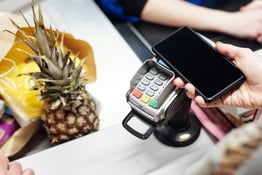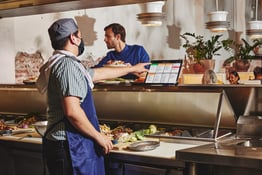My how the term “booked up” has changed for restaurants. Pre-pandemic, booking a reservation weeks in advance to ensure a table meant an eatery’s popularity was soaring. These days, reservations are used almost solely to manage capacity -- i.e. ensuring dining areas don’t soar over 50% max. In fact, it’s been encouraged that restaurants forgo previous “walk-ins welcome” completely and instead opt for takeout, delivery, and reservations only.
So let’s get you up to speed with another “new normal” Covid-19 restaurant policy, shall we?
In this guide, we will review the following:
Best online reservation systems
How to manage reservations during peak times
How to train staff to ensure a seamless reservation process
Best online restaurant reservation systems
In today’s tech-centric world, there’s certainly no shortage of online reservation systems. And each one is trying to outshine the other, which is why there are even those reservation systems discounting or even waving fees entirely to ease the challenges of reopening dining rooms with limited seating capacity. Because guess what, if restaurants are slow -- so are they! So you can expect reservation systems to pivot accordingly in order to make themselves as relevant as possible.
Here’s a lineup of some of the best reservation management systems (including software, sites and apps!) in the game:
EatApp
Eveve
HostMe App
OpenTable
Resy
TableIn
Waitlist Me
Zomato
Pro tip: many of these systems can also seamlessly integrate with your POS system, streamlining the efficiency of your restaurant as a whole).
>>>RELATED: How To Start Offering Takeout Or Delivery At Your Restaurant
How to manage reservations during peak times
While “peak times” may look a little different for restaurants in today’s climate with restaurant traffic reportedly down 48%, creating a strategy for your restaurant’s most bustling time block is crucial.
This, naturally, also means accounting for the inevitable no shows, which at a typical restaurant makes up approximately 15% of reservations. Yikes.
And considering a loss in revenue brought on by empty tables has an even larger impact now, here are tips to optimize your table seating as well as maintain happy—and returning!—customers.
Set hard limits:
When a library eliminates late fees, odds are, you don’t feel as pressed to finish your books in a couple weeks. Similarly, if there is no deterrent for arriving late for your reservation, you will probably arrive late. And, well, it can throw everything else off.
Moral of this story: urgency is king. Implement a 15 minute courtesy policy that makes it crystal clear to patrons they risk losing their table when the clock runs out. Some dining establishments even take your credit card when booking the reservation in case they have to charge it for a late-cancellation or no-show.
Keep a few tables open:
You know when airlines offer vouchers if you give up their seat? That’s because they overbooked. Effective on eliminating empty seats, but if it backfires -- which in this case would be both parties actually showing for the same slot -- it can be a real pickle. Your solution? Make sure to have at least a couple unreserved tables; this will also help with social distancing in your restaurant's dining area.
>>>RELATED: Things Every Restaurant Operator Should Know About POS Systems
Embrace call-ahead seating:
This one can be especially useful as it’s essentially today’s version of a “walk-in.” It’s an effective solution for diners who can arrive at your restaurant within 15-20 minutes of the call; they are typically placed on a waitlist and the table is temporarily held. This tactic is a simple way for restaurant staff to quickly gauge whether or not the dining area can handle more traffic -- i.e. letting go one of the purposely held tables mentioned above. Not to mention, restaurants may notice customers calling in far more frequently in general to get a sense of a their safety measures.
Pro-tip: Certain apps such as Waitlist Me even allow patrons to “call ahead” via an app and provide real-time updates for when their table is ready.
How to train your staff to manage reservations
Once you have your technological end set up, now it’s time to make sure your front-of-house is well-versed in the entire reservation process. The more knowledgeable and skilled they are, the smoother the experience—ergo, the happier the customer. Wins across the board. Here are some pointers:
Get organized!:
Before you illicit a collective duh, stay with us: having a clear reservation policy in place and easily accessible for all staff members is pretty much like having a cheat sheet during an exam. Except this time, it will get you out of trouble (trouble = double and over-booking).
In the same vain, your reservations should be tracked in a single location -- book, spreadsheet, palm pilot! (kidding on that one) -- so it can be easily referenced by front of house.
>>>RELATED: How To Staff Your Restaurant Right
Have a plan for large reservations:
Again, lest we forget that there may be fewer large party reservations right now -- it’s still important to have a plan in place that fits the needs of your specific location.
For instance, if you have a small dining room, you may opt not to accept parties of 8 or more during peak hours; instead only accepting during slower times at your restaurant. And when you do book a larger party—considering it allots for a lot of your dining space —a holding deposit or cancellation fee may be implemented. A no-show for a large table can definitely hit hard!
Whatever situation best fits your restaurant, make sure your staff is perfectly clear on the terms in order for them to also be clearly communicated to patrons.
Designate a point person:
Each shift needs to have at least one staff member that is the “Grand Poobah” of reservations. This person knows it all: what’s going on in the restaurant, how many reservations are booked, how many open tables there are—and obviously, is familiar with all the policies and procedures. Not to say the entire staff shouldn't have a general knowledge of this, but trust us, having one dedicated person per shift who knows that day’s reservation schedule cold will alleviate a lot of headaches.
Don’t forget the golden rule:
Even with all the high-tech reservation management systems in the world, restaurants should never forget the golden rule: treat customers the way you would want to be treated. Because even when things are running smoothly, things will inevitably come up—reservations will get lost, things will get overbooked, customers will get worked up. Make sure your staff, above all, knows how to properly communicate with each person who enters your restaurant.
Killing with kindness is always a solid tactic. Especially right now.
[Photo: QuickOrder via Unsplash]





